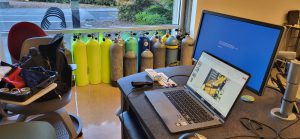
Cylinder Inspection Training: Why a Maintained Cylinder Is a Happy Cylinder
Uncover the importance of gas cylinder inspections and training. Dive deep into ensuring safety, boosting efficiency, and prolonging cylinder life.
Cylinders are in more environments than many people realize. They are used for beverages, fire suppression, aviation, welding, gas distribution and emergency operations. They become such a common item of the landscape that most people do not notice or pay attention. They are also so well manufactured, that with millions of them in our facilities, cylinders rarely do anything to draw our attention. They sit quietly performing their functions. Sadly, all it takes is one mistake for a cylinder to cause harm and destruction.
In one such case, there was a construction project which included installing a fire suppression system in a building. Fire suppression systems commonly use High pressure cylinders filled with a gas to extinguish a fire. In this specific scenario a company was installing 80 high pressure cylinders into a fire suppression system. While the installation was in progress, other projects were in process.
During the installation process the safety caps for the cylinders were removed. However, the cylinders had yet to be properly secured. Unsecured and uncapped high pressure cylinders did not raise any known concerns for the people around this project. Until one of them reportedly fell over. Falling over caused a cascade effect of the other 79 cylinders. 66 of those cylinders fell over and some were propelled around the site at over 170mph. The cylinders caused excessive damage and struck numerous workers. The cylinders injured 6 workers and killed another.
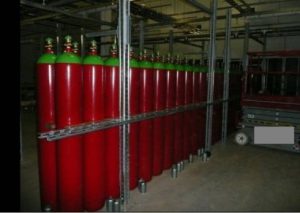
A court system found the facility and installer at fault. They did not adhere to safe cylinder handling and the fines exceeded $890,000 (usd).
The cylinders were brand new and likely on a stable platform. It would be presumed that workers around the cylinder saw a brand-new cylinder on a stable platform, what could go wrong? What was forgotten was that cylinders are taller, than wide, extremely heavy, brass valves, high pressures and still subject to gravity. All it takes is a small push, or little force to cause a gas cylinder to topple. The cylinder itself may be able to withstand falling over, without weakening the cylinder. However, the valve containing the gas is manufactured from a softer metal, brass. The weight of a falling cylinder will easily shear a brass valve.
Two primary safety steps were not taken or possibly ignored. Due to the instability of a standing cylinder, they MUST be properly secured when not in use. The type of securing device must be able to hold a heavy cylinder. The second safety protocol that was ignored was the use of a safety cap on an unused cylinder. The cap is attached to the cylinder. It is designed to protect the brass valve in case the cylinder was to topple over. .
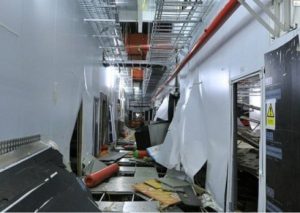
Since cylinder ruptures are not common, most workers ignore these two safety precautions. Why worry about them since nothing ever happens? That is the type of thinking that all workers must be trained to be aware. It might take an article, such as this, to remind employees that if a cylinder is not handled properly, it contains explosive energy. Or its going to require a trained employee to witness an unsafe act that triggers them to contact a supervisor about adhering to safety procedures.
Any employee or visiting staff needs to be made aware of hazards involving pressurized gasses. The training does not need to be extensive; it just needs to be memorable. And to keep the safety procedures in mind, it is recommended that they are reviewed at least every three years if not more often. All pressurized cylinders are hazardous material. And anyone working around these cylinders needs to be made aware of the hazards.
Facilities need to avoid the scenario in this specific case. A life was lost, people were injured, facilities were damaged, and companies were fined. All because safety caps were removed, and some cylinders were not secured to a wall or laid flat for safety.
Copyright © [hfe_current_year] [hfe_site_title] | Powered by [hfe_site_title]

I enjoy continuing to build the business based on safety since 1999. CTS focuses on the inspection of high pressure cylinders, the maintaining of the valves and basic maintenance of high pressure compressor systems. CTS stays current in techniques and tools to train both the new and novice employee. We publish articles, update training tools and have created an APP to assist during the inspection process.
#cylinder #safety #hazmat #training #cylinderinspectiontraining #cylindex

Uncover the importance of gas cylinder inspections and training. Dive deep into ensuring safety, boosting efficiency, and prolonging cylinder life.
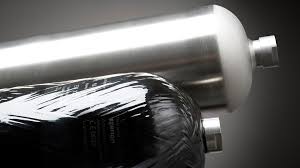
Is your composite cylinder showing signs of wear? Discover when to seek a professional repair service in our comprehensive guide.
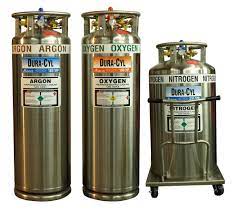
29 CFR 1910.101 intro Handling cryogenic cylinders involves working with extremely low-temperature gases that pose unique safety risks. To ensure the safe handling, storage, and transportation of these hazardous materials,
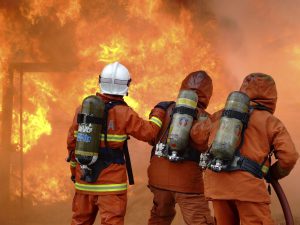
Introduction Firefighters encounter many risks while on duty, including hazardous materials and high pressure bottles. High pressure bottles are used for a variety of purposes in firefighting, including powering hydraulic